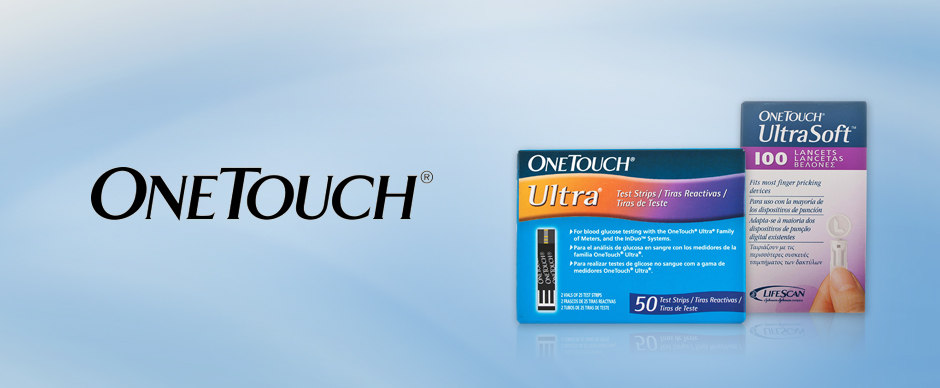
Self-testing with One Touch
Individuals with diabetes will find many benefits from regularly self-testing their blood glucose levels, as they will be able to monitor and manage their diabetes easily and effectively. One Touch makes this process incredibly easy thanks to their range of easy to use glucose meters and test strips that allow you to manage your diabetes anywhere at any time. They provide you with all the information you need to ensure you and your doctor can make the best decisions regarding your health.
Self-testing your blood glucose allows you to decide which lifestyle changes you need to make as it enables you to see the effect of certain foods, drinks and exercise can have upon your blood sugar levels and you can make adjustments accordingly. This will mean you have more control over your condition and it can help you to improve your blood glucose levels to make your life with diabetes as simple and easy as possible. If you suffer from type 1 and need to provide your body with insulin, monitoring your glucose will help you confirm symptoms of low blood sugar (hypoglycaemia) and help you to manage the right insulin dose.
How do I take a blood glucose test?
Some people may worry about taking blood glucose tests, but with One Touch it couldn’t be more easy and simple and it will quickly become something you get used to. One Touch meters allow you to test your blood sugar at home or on the go and all you need to do is follow a few simple steps.
- Get to know your meter before using it, so read all of the instructions thoroughly and consider practicing use under the supervision of a healthcare professional.
- Before taking a blood test, wash your hands with soap and water in order to ensure a more accurate reading and reduce the chances of the sample being contaminated. Use warmer water if you have naturally cold fingers as it is more difficult to draw a drop of blood from colder hands.
- Choose a different finger each time you test, but try to avoid using your thumb or index finger. You may wish you talk to your doctor or healthcare professional to help find the best testing site, as some find their palm or forearm is less painful.
- Prick the side of the finger as it is the least sensitive part of the finger and will not be as painful.
- Gently massage and squeeze the fingertip to encourage a drop of blood to form. If this proves a little difficult, try to hang your hand upside down to allow more blood to flow to your fingers.
- If the blood smears or runs, do not use this as a sample. Simply dry the area and squeeze the finger for a new blood drop. Alternatively, try a different site to gain a better sample.
- Once you’ve obtained a drop of blood, place it on the test strip and place this into the meter - following the meter’s instructions.
- Most meters including the One Touch meters will have a built-in memory to store your results for you. If not, it’s a good idea to keep a detailed log of your results to allow you to trace patterns and manage your lifestyle more effectively.

